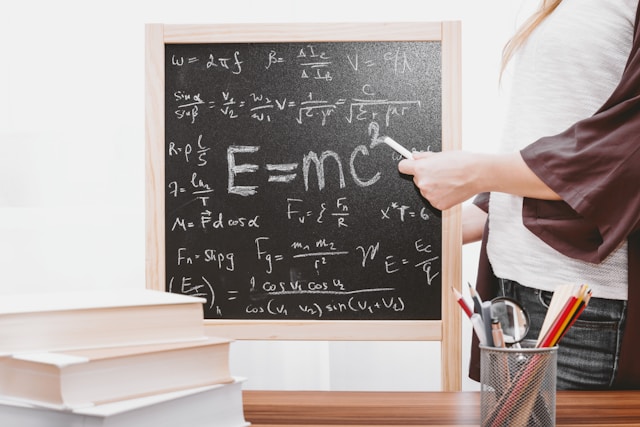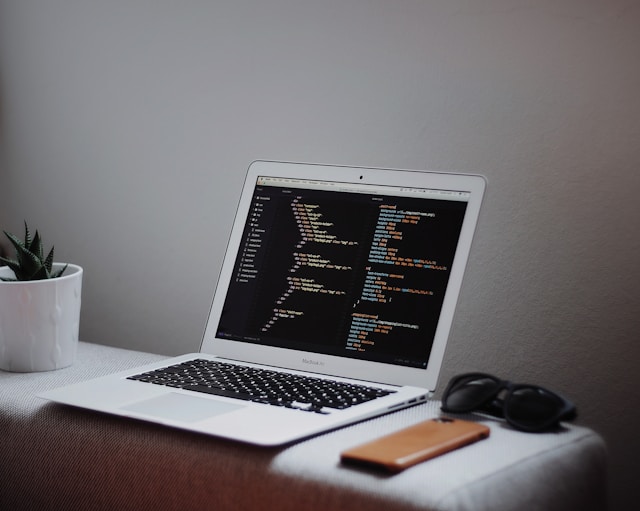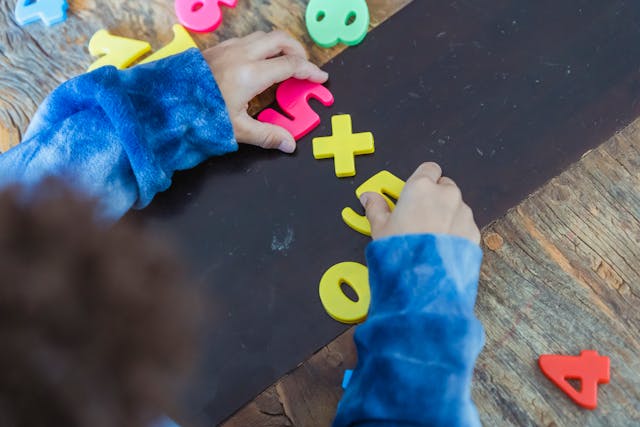The arcane and somewhat obscured intersection of Martial Arts Mathematics, particularly in avenues such as karate, is an area that has not received its due attention yet holds profound pertinence to this ancient craft. Often, the prevailing perception surrounding karate is one-dimensional – confined merely to physical exertions involving kicks and punches or defensive stratagems. However, it beholds a far-reaching structure that weaves itself into the fabric of mathematical principles with remarkable fluidity. The phrase “karate kats maths” was birthed aptly to encapsulate this fascinating coalescence which remarkably underscores martial arts’ latent depths.
Karate kats maths essentially represents a numerically inclined exploration of spatial configurations, geometric arrangements and strategic timing pivotal to executing distinct maneuvers inherent in karate. It’s an enchanting pursuit seeking to tether individual computational prowess with the finesse of martial craftsmanship; delving into dynamics encompassing precise positioning, trajectory mapping and technique deployment. Math’s incorporation within karate practice harmonizes bodily movement coordination for peak power output and efficacy thereby facilitating the formulation of strategies aimed at honing techniques.
The Importance of Mathematics in Martial Arts Training
The intricate complexities and mathematical principles, inherent in the mastery of martial arts such as karate, can ignite one’s curiosity. A question often asked with a sense of wonderment is: “What are these so-called ‘karate cats’?” This phrase, frequently mired in misunderstanding, actually denotes categories or “cats” demarcating distinct karate techniques and maneuvers.
Each technique – be it a punch or kick or defensive block – embraces numerous factors and variables that intertwine to form a pattern akin to a mathematical formula. The invisible framework underlying this sport possesses an intricate sophistication that demands renewed admiration for both the discipline of martial arts and its scientific premise.
Intricate elements like orientation, timing, speed even psychological tactics employed during karate require an acute understanding of arithmetic and geometry. For example – calculating the exact angle at which to strike your opponent while maintaining balance is essentially mathematics taking physical form. Similarly, we can view the rhythm created by alternating offensive and defensive moves as an elaborate sequential pattern shedding light on how numeracy plays an indispensable role within karate.
So once you acknowledge this intimate relationship between mathematics and martial arts; new pathways open up leading towards enhanced training strategies resulting in higher proficiency levels.
Exploring the Relationship Between Karate and Numerical Disciplines
At first blush, the connection between karate – a physical sport, and mathematics – an intellectual discipline, may seem puzzling. Yet surprisingly, there exists a profound linkage that goes beyond the conspicuous physical aspects of karate into a sphere where cognitive pedagogical approaches such as ‘how to learn math for kids’ can be harmoniously woven in. Unquestionably, the dynamics inherent in karate encapsulate mathematical doctrines and notions from pinpoint angles and choreography to timing and velocity entwined with technique execution.
Comprehending mathematical ingredients interlaced within karate offers not only an unexpected twist but also introduces a thrilling approach towards tackling the dilemma of ‘how to learn math for kids?’ For example, youngsters can decipher angles and directionality by grasping how various karate maneuvers correlate to geometrical configurations. Notions like sequence and series become tangible when learners comprehend ‘kata’ or forms – predetermined sequences of movements executed in exact order intrinsic to Karate. This marriage of mathematical tenets with kinetic action could potentially act as an imaginative spark plug stimulating students’ interest in mathematics.
The Role of Quantitative Skills in Karate Techniques
In the domain of combat disciplines, particularly Karate, numeracy abilities weave a complex tapestry. At their core, these aptitudes enhance the understanding of spatial cognizance, temporal precision, force magnitude, angle computation and sequence organization – elements that are all indispensable in performing karate techniques with efficacy. The tactical administration of punches, kicks and blocks in karate is firmly anchored in mathematical principles. These axioms frame the interpretation of duration needed for contact initiation, optimal angle for maximum safeguarding and necessary velocity for an effective blow.
The incorporation of mathematics into the dissemination of martial expertise has emerged as a novel yet potent stratagem – but how can one best impart math to children within this framework? One methodology entails introducing numerical conundrums through physical exemplifications. For example when elucidating kids about angles conceptually; karate mentors can make correlations to various postures and movements within the discipline. This direct participation furnishes a tactile experience combining both math instruction and karate exposure concurrently; thereby rendering education more immersive and yielding.
Applying Computational Skills in Karate Practice

The realm of karate unfurls a labyrinth more intricate than mere tallying of strikes or kicks. It descends into the profound abyss where timing, rhythm, distance and speed coalesce in cryptic harmony. Akin to mathematics, these elements court precision and accuracy for potent execution. Those who walk the path of karate – the Karatekas, harness these mathematical principles as compass points towards optimal striking areas, accelerometers measuring momentum and force, strategizing their combat dance like chess grandmasters on an invisible board. This fusion carves a fluid bridge between physical prowess and computational aptitude: enhancing not just their martial artistry but also sharpening their analytical edge.
Moreover, this intriguing crossroads where karate converges with computational skills stretches its tendrils beyond corporeal confines into cognitive territories uncharted. In this arena resides spatial awareness – a cornerstone in any practitioner’s skill set that demands extensive computational cognition. The Karatekas navigate through geometric principles to decipher angles, directions and positions relative to their adversary: akin perhaps to celestial navigation under a starless void? They analyze patterns and sequences; internally processing such multifaceted variables at lightning speed for split-second decisions during combat encounters; thereby transforming each practice session into crucibles tempering both martial proficiency along with mathematical acumen.
- The Karatekas apply computational skills in numerous ways to improve their combat strategies. They utilize mathematical principles such as precision and accuracy to identify optimal striking areas and measure momentum and force, much like how an accelerometer functions. This allows them to plan their moves strategically, similar to a chess grandmaster planning his next move on the board.
- Applying computational skills in karate practice extends beyond physical techniques into cognitive abilities. Spatial awareness is a key skill that requires extensive computational cognition. By understanding geometric principles, practitioners can decipher angles, directions and positions relative to their opponent – similar perhaps to navigating under a starless sky?
- Another application of these skills lies in pattern recognition and sequence analysis during combat encounters. Practitioners must process complex variables at high speed for quick decision-making during fights.
- Through consistent practice sessions, both martial proficiency and mathematical acumen are honed simultaneously. Each session serves as a crucible tempering these two aspects together.
In conclusion,
- Computational skills play an integral role in amplifying karate prowess
- These skills extend from physical techniques into cognitive abilities
- Constant training refines both martial artistry along with sharpening analytical edge
Thus, the fusion of karate with computation forms not just formidable fighters but also astute calculators; bridging the gap between brawn and brains seamlessly while embodying the essence of ‘Karate-do’ -the way of empty hand through wisdom’s lens.
Enhancing Martial Arts Techniques Through Mathematical Principles
In the realm of martial arts, it is mathematical principles that act as the invisible puppeteer, guiding one’s hands and feet towards efficient and effective techniques. Martial artists have found an ally in geometry; applying its laws to maximize their strikes, kicks, defenses – optimizing them like a fine-tuned machine.
The angle at which a punch or kick is launched can be likened to adjusting the trajectory of a missile; subtle changes can result in dramatic alterations in speed and power. Then there’s the concept of force: not simply reliant on raw muscle strength but also intrinsically linked with the velocity of delivery.
Thus concepts such as momentum and velocity rear their heads into this scenario. These principles fall under physics’ umbrella – itself branching from mathematics’ vast tree- proving crucial for understanding attacks’ true impact potential.
Martial arts training isn’t just about physical prowess though; it also dips its toes into probability theory’s waters especially when strategy and anticipation come into play. A fighter armed with knowledge about likely moves during combat becomes akin to a chess player predicting his opponent’s next steps – ready to defend or counteract efficiently while improving reaction time.
As we delve deeper into advanced combat levels, game theory starts playing its part. Herein fighters begin anticipating opponents’ moves based on previous actions they’ve observed- turning each match almost psychic in nature.
So essentially martial artists are constantly performing rapid-fire calculations involving angles, force, speed and probability during each bout – all contributing to honing their techniques until they’re razor sharp.
The Interplay of Numeracy and Karate Movements
Embodied within the heart of karate, as with any martial art, is an intriguing fusion of physical prowess mingled with mental agility. Precision, rhythm and pattern discernment are qualities not exclusive to mathematics but integral facets found within the choreography of martial arts movements. Numeracy – a proficiency in understanding and manipulating numbers – has an imposing presence in structuring and executing these kinetic sequences.
Every individual technique within karate involves a complicated dance of motions which can be quantified by time, sequence and angular directions; this showcases a clear interplay between numeracy skills and martial arts.
Simultaneously, pursuing mastery in karate requires full submersion into the principles governing geometry and physics. The meticulous execution of angles involved in kicks or punches; calculating force against resistance; grasping balance: all these elements form the bedrock for successful manoeuvres in martial arts. Thus, numeracy transcends simple arithmetic to encompass both composition and deconstruction of combat techniques – demonstrating symbiosis between mathematical understanding woven into every movement within karate’s tapestry.
FAQ
This concept encapsulates the fusion of mathematical doctrines and quantitative aptitudes within martial arts training. It’s about grasping geometric principles, timing nuances, distance calculations, and speed dynamics for perfecting martial arts maneuvers.
The influence of mathematics in this realm is substantial. It assists in honing precision, mastering timing and gaining control over movements. Furthermore, it helps practitioners to comprehend the mechanics behind their techniques which can potentially heighten performance levels.
Karate shares a robust bond with numerical disciplines due to their shared emphasis on precision, accuracy, and sequence. For instance, certain karate moves necessitate comprehension of angles as well as calculation of distance and time–all vital elements rooted in math. Such an understanding enhances both effectiveness and efficiency.
Quantitative prowess equips a martial artist to determine angles accurately while gauging velocity and force necessary for effectively performing specific moves. This not only ensures movement accuracy but also aids in anticipating opponents’ strategies thereby enhancing overall performance.
Computational capabilities come handy during such sessions by determining optimal strike angles while comprehending rhythm patterns besides assessing required distance & positioning for effective execution of maneuvers. These abilities are also instrumental during strategizing or decision-making instances throughout training or matches.
Mathematical rules help refine these techniques by fostering precision along with efficiency. Grasp over geometry enables optimization regarding striking angles & movement trajectories whereas concepts pertaining to speed & distance aid timely attacks or defenses.
The interaction between numeracy & karate maneuvers entails the usage of mathematical principles like angles, distance, and speed in refining martial arts techniques. Numeracy allows practitioners to comprehend the science involved behind each move, leading to more efficient execution of these techniques. This blend results in a scientific approach towards martial arts characterized by precision and control.



